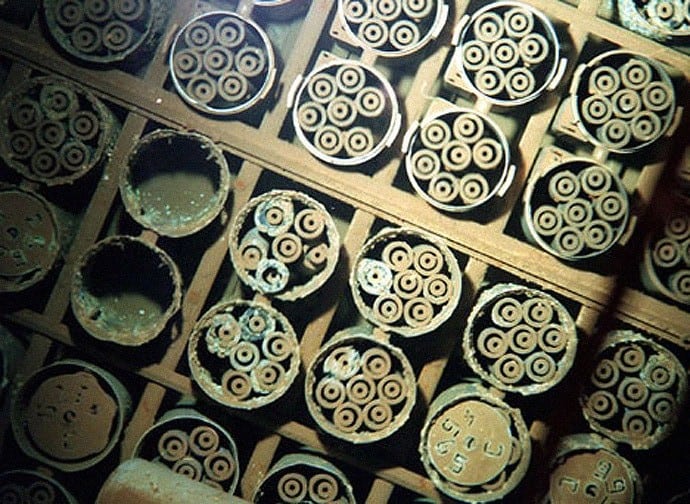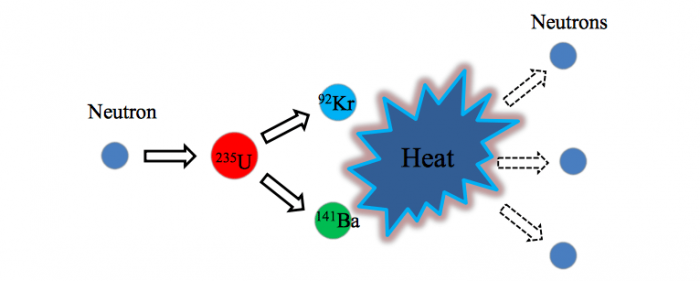
Since the oil crisis of 1973, the issues associated with nuclear energy have gradually gained attention worldwide.
As shown in Figure 1, the generation of nuclear power is caused by the nuclear fission reaction incurred by the impact of a neutron with 235U (Uranium-235). This reaction generates large amounts of heat that can boil water in a reactor pressure vessel (RPV) with a high-temperature and high-pressure steam. As a result, the turbine is powered by steam to complete the electricity generation.

Fig. 1: Schematic diagram illustrating the nuclear fission reaction. Credit: Cheng-Lun Yu
The advantage of nuclear power is its efficiency and stability. Compared with thermal power, nuclear power can greatly reduce the volume of CO2 and aerosol particles, which improves the trends of global warming and air pollution, respectively.
However, there are several disadvantages to nuclear power. For example, a hydrogen explosion reaction could occur in the spent fuel pool (SFP). When the fuel rods made by 235U in RPV are unable to maintain the nuclear fission reaction, the spent fuel rods need to be moved to SFP equipped with a cooling water system. If the cooling system is out of order, the decay heat from spent fuel rods will not only continue to increase the temperature of the spent fuel rods, but also boil the water in RPV into steam. Because of the fuel-rod clad made by Zr (Zirconium), it is possible for Zr to react with steam at high temperatures (>1089 K) [1], which can generate a large mass of hydrogen that could incur a hydrogen explosion reaction in SFP. This reaction significantly threatens the safety of a nuclear power plant and SFP.
To avoid steam, a study associated with decay heat removal by environmental air (300 K) is considered in this work. The Computational Fluid Dynamics (CFD) is employed to analyze the heat transfer of spent fuel rods stored in SFP. CFD is a simulation tool that can predict the flow, temperature, and pressure fields in SFP by solving the Navier-Stokes hydrodynamic equations [2].
In this work, the numerical results reveal that when the decay heat is close to 8.466 MW (Million Watts), the maximum temperature of fuel rods could be larger than 1089 K. Note that if there is some vapor in SFP, a Zr-water reaction still be incurred by the high temperature. In other words, the spent fuel rods are cooled by the environmental air in SFP, which is safe for decay heat < 8.466 MW. For decay heat in the range of 0.282 MW to 8.466 MW, the simulation results also indicate that the height of the maximum fuel-rod temperature ranges between 2.1 meters and 3 meters from the bottom of the fuel rod. Owing to thermal damage to the spent fuel rods stored in SFP, it is suggested that the nuclear power plant should monitor the fuel-rod structure in this height range.
These findings are described in the article entitled Numerical study on hydrodynamic and thermal characteristics of spent fuel pool, recently published in the journal Annals of Nuclear Energy. This work was conducted by Cheng-Lun Yu from the Institute of Nuclear Energy Research, Taiwan, ROC.
References:
- Baker, L.J., Just, L.C., 1962. Studies of Metal-water Reactions at High Temperatures. III. Experimental and theoretical studies of the zirconium-water reaction. Argonne National Laboratory, Argonne, Illinois, USA.
- Patankar, S.V., 1980. Numerical Heat Transfer and Fluid Flow. Hemisphere Publishing Corporation Press, New York, USA.








